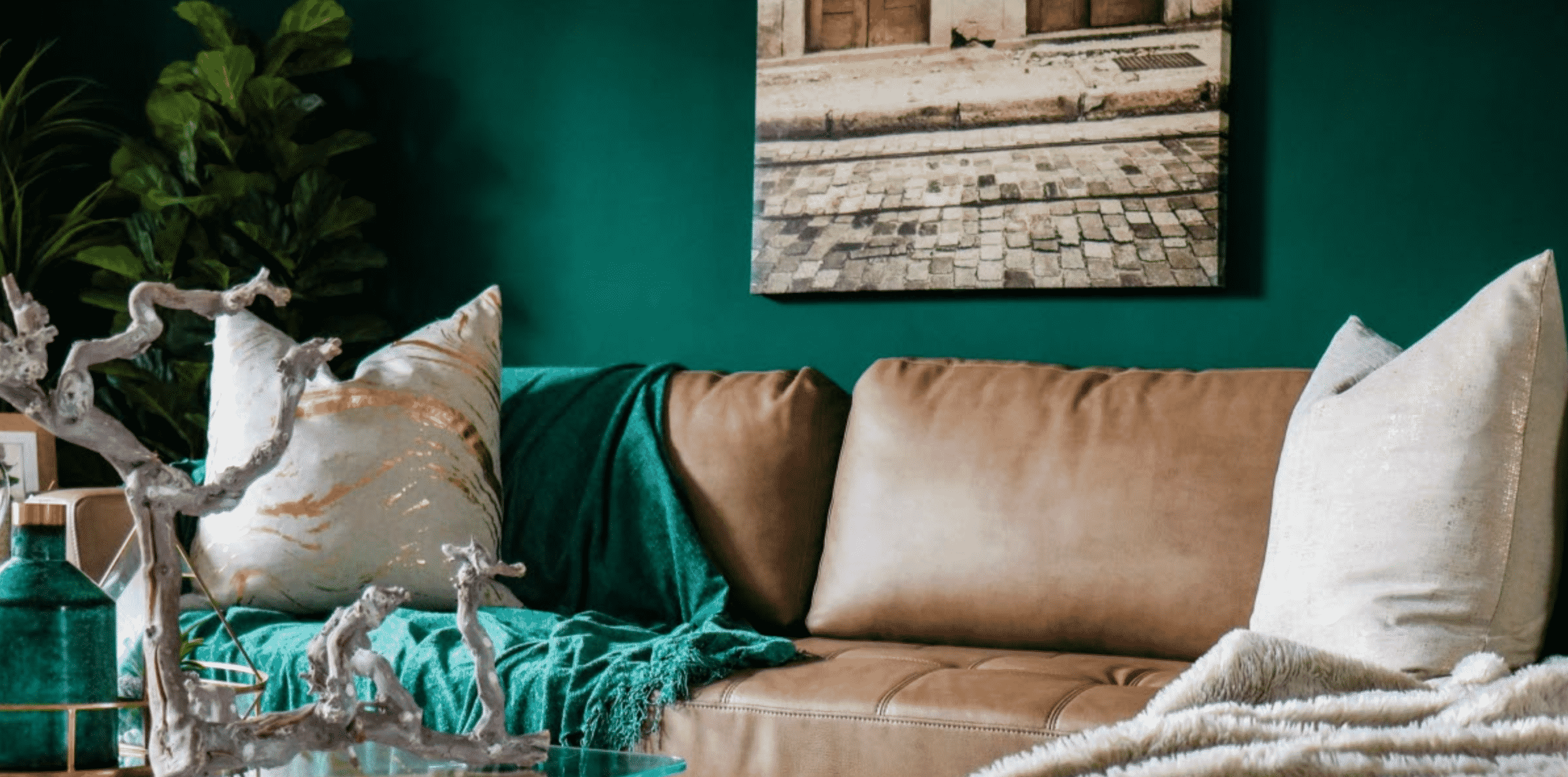Accent walls have become a popular interior design trend in recent years, with homeowners thrilled at the idea of adding their favorite bold colors to a space without having to paint a whole room that color.
However, just like any color in a room, accent walls can be overdone, leading to the room feeling more claustrophobic and chaotic rather than cohesively designed.
We’ve got your guide to correctly using accent walls in your home so you can add a little color without going overboard.
What Is an Accent Wall?
An accent wall is one wall in a room that’s painted a different color to accent it. This can be to highlight decor on the wall, draw focus toward a specific area of the room, or just to highlight a color.
How to Paint an Accent Wall in Your Home
Painting an accent wall in your home is more than just a matter of slapping some paint onto a wall.
Choose the Right Wall
First, you have to find the correct wall in the room to be the accent wall. Painting the wrong wall can lead to the room feeling chopped up and messy rather than intriguing.
To find the right wall, you need to look for the natural focal point in the room. In a living room with a fireplace, for example, paint the wall surrounding the fireplace. For a bedroom, try the wall behind the headboard. Or, if you want to create a gallery wall or to showcase a gorgeous sofa in your living room, select the wall behind these pieces.
You want the accent wall to be the wall you’re trying to draw attention to. So, don’t decide to paint the wall opposite the headboard in your bedroom, for example, as the color will pull focus toward the accent wall, but the headboard will pull focus in the opposite direction.
Take Inspiration
The color you choose for your accent wall should have its roots in the decor of the room around it. Not selecting a color that works well with your decor will make things feel messy and chaotic, doing more harm than good.
Instead, look for color inspiration in the artwork, furniture, and textiles in the room surrounding the accent wall.
Maybe you select a color from the bedspread in the bedroom, a statement painting in the dining room, or a gorgeous rug in the living room. Whatever color you choose, make it one you really love and know you can live looking at painted all over your wall.
Choose the Right Shade
Many people use accent walls as a way to add bold colors to the walls without fully committing to a whole room redo.
However, the days of painting an accent wall a bold, glossy red are come and gone in interior design trends.
Now, accent walls are far more muted, providing a color balance to the neutral color of the rest of the room.
If you’re wanting to add color, don’t shy away from the greens, blues, yellows, and purples, but elect a muted shade as opposed to a bold one.
And, if you live with the color for several months and find it too muted, you can always go back and paint a bolder hue!
Avoid Matching
You want your accent wall to stand out and complement colors found in your room, but avoid selecting main colors.
Instead of opting for the blue that makes up the main pattern on your couch, for example, select instead the more subtle yellow.
Choosing a color that already has a large amount of attention in the room will cause things to look very monochromatic and matchy, when you’re really going for coordination with contrast.
Skilled Interior Painters in Metro Detroit
At Armor Tough Coatings, it’s our goal to help you get the beautiful interior spaces that you deserve. From choosing the color all the way through annual touch-ups, our team of skilled painters gives you unparalleled customer service every step of the way. Call today for an estimate!









